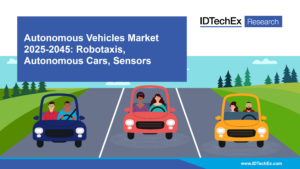Automotive Applications for Embedded Vision
Vision products in automotive applications can make us better and safer drivers
Vision products in automotive applications can serve to enhance the driving experience by making us better and safer drivers through both driver and road monitoring.
Driver monitoring applications use computer vision to ensure that driver remains alert and awake while operating the vehicle. These systems can monitor head movement and body language for indications that the driver is drowsy, thus posing a threat to others on the road. They can also monitor for driver distraction behaviors such as texting, eating, etc., responding with a friendly reminder that encourages the driver to focus on the road instead.
In addition to monitoring activities occurring inside the vehicle, exterior applications such as lane departure warning systems can use video with lane detection algorithms to recognize the lane markings and road edges and estimate the position of the car within the lane. The driver can then be warned in cases of unintentional lane departure. Solutions exist to read roadside warning signs and to alert the driver if they are not heeded, as well as for collision mitigation, blind spot detection, park and reverse assist, self-parking vehicles and event-data recording.
Eventually, this technology will to lead cars with self-driving capability; Google, for example, is already testing prototypes. However many automotive industry experts believe that the goal of vision in vehicles is not so much to eliminate the driving experience but to just to make it safer, at least in the near term.

In-cabin Sensing: Gaze Tracking and Steering Wheel Sensors
Driver monitoring systems and occupant monitoring systems operating within a vehicle are designed to enhance passenger welfare and increase the safety of vehicles. IDTechEx outlines technologies from infrared cameras and time-of-flight cameras, to potential ECG monitoring within the steering wheel in their report, “In-Cabin Sensing 2024-2034: Technologies, Opportunities and Markets“. Infrared uses and adoption RGB-infrared

How Do LWIR Cameras Fit Into Vehicles of Today and In the Future?
The Society of Automotive Engineers defines 6 levels (0 to 5) of autonomy available to vehicles, ranging from level 0 (no automation) to level 5 (full automation). The jump from level 2 to 3 is a large one that has seen limited deployment, as automotive OEMs assume greater liability, and eyes can be taken off

Electrification and Autonomy: A Semiconductor Content Boost to $1,000 per Car by 2029
This market research report was originally published at the Yole Group’s website. It is reprinted here with the permission of the Yole Group. Automotive OEMs are moving upstream in the semiconductor supply chain with diverse strategies. OUTLINE The automotive semiconductor market is expecting a significant CAGR of 11% between 2023 and 2029 to almost $100

Free Webinar Explores Sensing Solutions for ADAS and Autonomous Vehicles
On January 28, 2025 at 9 am PT (noon ET), Ian Riches, Vice President of the Global Automotive Practice at TechInsights, will present the free hour webinar “Sensing In ADAS and Autonomous Vehicles: What’s Winning, and Why?,” organized by the Edge AI and Vision Alliance. Here’s the description, from the event registration page: It’s clear

MIPS Releases P8700, Industry’s First High-performance AI-enabled RISC-V Automotive CPU for ADAS and Autonomous Vehicles
SAN JOSE, CA – October 30, 2024 – MIPS, a leading developer of efficient and configurable IP compute cores, announced today the general availability(GA) launch of the MIPS P8700 Series RISC-V Processor. Designed to meet the low-latency, highly intensive data movement demands of the most advanced automotive applications such as ADAS and Autonomous Vehicles (AVs),

The Global Robotaxi Market Value in 2024 Will be $174B
For more information, visit https://www.idtechex.com/en/research-report/autonomous-vehicles-market-2025-2045-robotaxis-autonomous-cars-sensors/1045. The global robotaxi vehicle market value in 2045 will be US$174 billion, growing with a 20-year CAGR of 37% between 2025 and 2045 and with a market share dominated by leaders from the US and China, such as Google’s Waymo, GM’s Cruise, WeRide, Baidu, and AutoX. IDTechEx’s Autonomous Vehicles Market

MIPI Alliance Releases Camera Security Specifications for Flexible End-to-end Protection of Automotive Image Sensor Data
MIPI Camera Security Framework delivers application-layer security services for end-to-end data protection and configurable security levels based on application requirements BRIDGEWATER, N.J., October 29, 2024—The MIPI Alliance, an international organization that develops interface specifications for mobile and mobile-influenced industries, today announced the release of the MIPI Camera Security Framework, which defines a flexible approach to

Optimizing the CV Pipeline in Automotive Vehicle Development Using the PVA Engine
This blog post was originally published at NVIDIA’s website. It is reprinted here with the permission of NVIDIA. In the field of automotive vehicle software development, more large-scale AI models are being integrated into autonomous vehicles. The models range from vision AI models to end-to-end AI models for autonomous driving. Now the demand for computing

Qualcomm Announces Multi-year Strategic Collaboration with Google to Deliver Generative AI Digital Cockpit Solutions
Highlights: Qualcomm and Google will leverage Snapdragon Digital Chassis and Google’s in-vehicle technologies to produce a standardized reference framework for development of generative AI-enabled digital cockpits and software-defined vehicles (SDV). Qualcomm to lead go-to-market efforts for scaling and customization of joint solution with the broader automotive ecosystem. Companies’ collaboration demonstrates power of co-innovation, empowering automakers

Qualcomm Races Ahead in the Evolution of Software-defined Vehicles with New Snapdragon Cockpit Elite and Snapdragon Ride Elite Platforms
Highlights: Li Auto and Mercedes-Benz AG select Snapdragon Elite tier automotive platforms for their future commercialized vehicles. New Snapdragon Cockpit Elite and Snapdragon Ride Elite platforms debut with Qualcomm Oryon CPU, now tailored for automotive. Platforms are targeting 3x faster CPU and up to 12x stronger AI performance* for in-vehicle experiences compared to previous flagship

